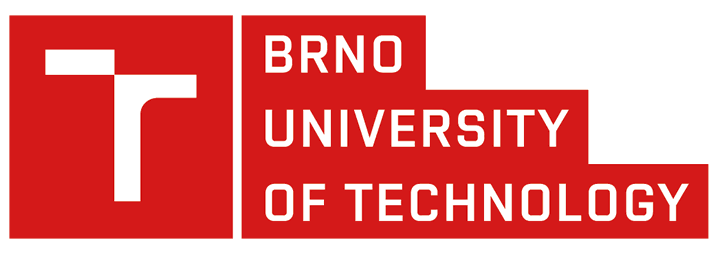Perun: Lightweight Performance Version System

Perun is an open source light-weight Performance Version System, which works as a wrapper over
projects in Version Control Systems (such as git) and (in parallel) tracks performance profiles
(i.e., collection of performance metrics) corresponding to different versions of underlying project.
Moreover, it offers a wide tool suite that can be used for automation of the performance regression
test runs, postprocessing of resulting profiles (e.g., by creating performance models) or
effective interpretation of the results.
In particular, Perun has the following advantages over, e.g., using databases or sole Version Control Systems for the same purpose:
-
Preserves Context---each performance profile is assigned to a concrete minor version adding the functional context (i.e., code changes) of profiles. This way, one knows precisely for which code version, the profile was collected.
-
Provides Automation---Perun allows one to easily automate the process of profile collection, eventually reducing the whole process to a single command. The specification of jobs is read from YAML files.
-
Is Highly Generic---supported format of the performance profiles is based on JSON. Perun tool suite contains a basic set of visualizations, postprocessing and collection modules, but it is easily extensible.
-
Is Easy to use---the workflow, interface and storage of Perun is heavily inspired by the git systems aiming at natural use.
Perun is intended to be used in two ways: (1) for a single developer (or a small team) as a complete solution for automating, storing and interpreting performance of project or (2) as a dedicated store for a bigger projects and teams. Its git-like design aims at easy distribution and simple interface makes it a good store of performance profiles along with the functional (or environmental) context.
Installation
[!WARNING] Installing Perun into the system Python environment may cause dependency conflicts with other packages. We highly suggest using some form of virtual environment to install and run Perun (see the Installation in Virtual Environment section).
You can install Perun in the system Python environment from pip as follows:
pip3 install perun-toolsuiteAlternatively you can install Perun from the source code as follows:
git clone https://github.com/Perfexionists/perun.git
cd perun
make installThese commands install Perun to your system as a runnable python package. You can then run Perun
safely from the command line using the perun command. Run either perun --help or see the cli
documentation for more information about running Perun
commands from command line. Note that depending on your OS and the location of Python libraries, you
might require root permissions to install Perun.
Installation in Virtual Environment
To avoid dependency clashes and other installation issues, we recommend installing Perun in some form of virtual environment. For example:
-
Using the
venvstandard library. This is the easiest default approach as no additional packages or dependencies are needed. For example, the following code snippet creates a virtual environmentperun-venvin the current directory using the system Python version, activates the environment, and installs Perun in the environment.python -m venv perun-venv source perun-venv/bin/activate pip install perun-toolsuite
It is also possible to create a virtual environment using different Python version, provided that the Python version executable is installed on the system. For example,
python3.12 -m venv perun-venvwill create a virtual environment for Python 3.12. Note that theperunCLI command will only be accessible when theperun-venvvirtual environment is activated. -
Using the
pipxpackage. Pipx automatically creates new virtual environment for each installed Python application. Provided you have thepipxtool available on your system, Perun can be installed as follows:pipx install perun-toolsuite
The
perunCLI command will now be accessible directly without the need to activate any virtual environment.
Other forms of virtual environments might work as well, however, these are the only ones we tested.
System Dependencies
It is possible that some of the Perun commands may not be working at first, or that the installation fails (if some of the Python dependencies are not available as wheels and need to be built from source). This is likely due to some missing system dependencies:
g++python-develcmake(complexity collector)perf(kperf collector)libunwind,libunwind-devel(memory collector)perl-open(flamegraph view)
Checking Perun Installation
It is advised to verify that Perun is running correctly in your environment as follows:
# Runs all tests using pytest
make testor alternatively using Tox if you wish to test for more Python versions (see the developing section).
Note that we do not guarantee Perun to work on other Python versions than those marked as supported
in the pyproject.toml file (also shown as a badge at the top of this README).
Installing Tracer Dependencies
If you wish to use our tracer profiler, you have to install its dependencies first. Please refer
to INSTALL-tracer.md.
Developing
[!NOTE] Do not forget to check for missing system dependencies if the installation or some of the tests fail.
In order to commit changes to the Perun, you have to install Perun in development mode:
git clone https://github.com/Perfexionists/perun.git
cd perun
make devThis method of installation allows you to make a changes to the code, which will be then reflected by the installation.
Again, it is advised to verify that Perun is running correctly in your environment as follows:
# Runs all tests using pytest
make testOr you can use Tox to run tests for all the supported Python versions, as well as run static type checking, code style linting and generating documentation:
tox runIf you wish to test only against a single Python version, run Tox as:
tox run -e py3.Ywhere Y is the python sub-version you wish to test. To see the available Tox environments (and
consequently, the supported Python versions), run:
tox listIf you are interested in contributing to Perun project, please refer to contributing section. If you think your results could help others, please send us PR, we will review the code and in case it is suitable for wider audience, we will include it in our upstream.
But, please be understanding, we cannot fix and merge everything immediately.
Getting Started with Perun
In order to start managing performance of your project tracked by git,
go to your project directory and run the following:
perun init --configureThis creates a parallel directory structure for Perun storage (stored in .perun),
and creates initial configuration of the local project settings and opens it in the text editor
(by default vim).
The configuration is well commented and will help you with setting Perun up for your project.
You can specify, e.g., the set of collectors (such as time or trace),
or postprocessors and specify which commands (and with which arguments and workloads) should be profiled.
See configuration for more details about Perun's configuration.
If you only wish to briefly try Perun out and
assuming you have opened the configuration file from the previous step
(or you can open it from the path .perun/local.yaml),
then we recommend to uncomment keys called cmds, workloads and collectors.
This will suffice to demonstrate Perun's capabilities.
If you set up the configuration properly you can now start collecting the profiles for the current version of your project using single command:
perun run matrixThis command collects performance data (resulting into so called profiles), according to the previously set configuration (see specification of job matrix for more details). You can then further manipulate with these profiles: view the list of collected and registered profiles, and visualize the profiles (see visualization overview), or check for possible performance changes (see degradation documentation):
# Show list of profiles
perun status
# Show the first generated profile using tabular view
perun show 0@p tableof --to-stdout resources
# Register the first generated profile to current minor version
perun add 0@pNow anytime your codebase changes, rerun the collection phase, register new profiles and you can check whether any change in performance can be detected:
# Rerun the collection
perun run matrix
# Register the profiles for current minor version
perun add 0@p
# Run the degradation check
perun check headSelected Features of Perun
In the following, we list the foremost features and advantages of using Perun:
-
Unified performance profile format: our format of performance profiles is baed on JSON; JSON is easily parsable by other programs and languages and provide human-readable format. The downside is, however, its storage size and potentially slow processing.
-
Natural specification of profiling runs---we allow users to specify how to execute regular or more complex profiling workflows (the so-called jobs) in Yaml format; YAML is widely used in CI/CD and other approaches, and is supported by many programs and languages.
-
Git-inspired Interface---we provide command line interface for our tool suite; the commands are inspired by git version control systems e.g.
perun add,perun remove,perun status, orperun log. This allows users to quickly adapt to using Perun and its tool suite. -
Efficient storage---performance profiles are stored compressed in the storage in parallel to versions of the profiled project inspired by git. Note, that the resulting profiles can still be huge; we are working on compressing and reducing the resulting profiles even further.
-
Performance modeling---Perun's suite contains a postprocessing module for regression analysis of profiles that construct mathematical models of dependent variables (e.g. runtime) wrt given independent variable (see regression analysis documentation), which supports several different strategies for finding the best predicting model for given data (such as linear, quadratic, or constant model). We also support more advanced modeling using, e.g. kernel regression methods; these, however, require more domain specific knowledge.
-
Interactive Visualizations---Perun's tool suite includes support for visualization of the results, some of them based on holoviews visualization library, which provides nice and interactive plots. However, Perun also supports classical output to console as well.
-
API for profile manipulation---Perun provides modules for working with profiles in external applications---ranging for executing simple queries over the resources or other parts of the profiles, to converting or transforming the profiles to different representations (e.g. pandas data frame). We particularly recommend using this API in the Python REPL. See conversion api and query api for overview.
-
Automatic Detection of Performance Degradation---Perun offers several heuristics for automatic detection of performance degradation between two project versions (e.g. between two commits). This can be used either in Continuous Integrations, in debugging sessions or as parts of some precomming hooks.
-
Performance Fuzz-testing---Perun offers a performance oriented fuzz testing ---i.e. modifying inputs in order to force error or, in our case, a performance change. This allows users to generate new time-consuming inputs for theirs projects.
As a sneak peek, we are currently working and exploring the following featurues in near future of the project:
-
Automatic Hooks---a range of automatic hooks, that will allow to automate the runs of job matrix, automatic detection of degradation and efficient storage.
-
Support for more languages---we are currently working on support for profiling more programming languages. In particular, we wish to explore profiling languages such as C#, Python, Go or TypeScript. Moreover, we wish to support some well known profilers such as valgrind toolsuite or perf in our workflow.
-
Optimization of profiling process---in our ongoing work we are trying to optimize the runtime and the resulting storage space of the profiling process while keeping the precision of the results. Some of our optimizations are already merged in the upstream, however, we are currently enhancing our methods.
-
Optimal selection of versions---currently we automatically only support the comparison of two latest versions in git history. Alternatively, one can select two particular profiles to compare. We currently, exploring differt ways how to select version in history for comparison for some given version.
For more information about Perun's feature, please refer to our extensive list of features!
Contributing
If you'd like to contribute, please first fork our repository and create a dedicated feature branch. Pull requests are warmly welcome. We will review the contribution (possibly request some changes).
In case you run into some unexpected behaviour, error or anything suspicious, either contact us directly through mail or create a new Issue.
We build Perun so it is easily extensible. In case you are interested in extending our tool suite with new kinds of collectors, postprocessors or visualization methods, please refer to appropriate sections in Perun's documentation (i.e. Create your own collector, postprocessor or visualization). Do not hesitate to contact us, if you run into any problems.
If you are interested in contributing to Perun project, please first refer to contributing section. If you think your custom module could help others, please send us PR, we will review the code and in case it is suitable for wider audience, we will include it in our upstream.
But, please be understanding, we cannot fix and merge everything.
Links
- GitHub repository : https://github.com/Perfexionists/perun
- Issue tracker: https://github.com/Perfexionists/perun/issues
- In case of sensitive bugs like security vulnerabilities, please contact Tomas Fiedor or Jirka Pavela directly instead of using issue tracker. We value your effort to improve the security and privacy of our project!
- Project documentation:
- Redhat Research: https://research.redhat.com/blog/research_project/perun/
Unrelated links:
- Check out our group focusing on performance testing and performance anaysis of programs: Perfexionists
- Check out our research group focusing on program analysis, static and dynamic analysis, formal methods, verification and many more: VeriFIT
Licensing
The code in this project is licensed under GNU GPLv3 license.
Acknowledgements
We thank for the support received from Red Hat (especially branch of Brno), Brno University of Technology (BUT FIT), and the VeriFIT and RedHat research groups.



Further we would like to thank the following individuals (in the alphabetic order) for their (sometimes even just a little) contributions:
- Jan Fiedor (Honeywell)---for feedback, and technical discussions;
- Jirka Hladký and his team, and mainly Kamil Kolakowski (RedHat)---for technical discussions and cooperation;
- Martin Hruška (BUT FIT)---for feedback, and technical discussions;
- Viktor Malík (RedHat)---for feedback and support;
- Petr Müller (SAP)---for nice discussion about the project;
- Michal Kotoun (BUT FIT)---for feedback, and having faith in this repo;
- Hanka Šimková (Pluháčková) (BUT FIT)---for awesome logo, theoretical discussions about statistics, feedback, and lots of ideas;
- Adam Rogalewicz (BUT FIT)---for support, theoretical discussions, feedback;
- Tomáš Vojnar (BUT FIT)---for support, theoretical discussions, feedback;
- Jan Zelený (Red Hat)---for awesome support, and feedback.
- RedHat Research Team---Martin Ukrop, Nora Haxhidautiová, Kateřina Kozubková, Marek Grác---for support during integrating Perun in RedHat
- Eva Růžičková (Red Hat)---for photoshooting our team, and having patience with bunch of nerds.
Perun tool (and its authors) are or has been supported by several research projects. We hereby declare, there has been no double funding. In particular, we acknowledge the following projects.

Development of this tool has been supported by AQUAS project (Aggregated Quality Assurance for Systems, https://aquas-project.eu/). This project has received funding from the Electronic Component Systems for European Leadership Joint Undertaking under grant agreement No 737475. This Joint Undertaking receives support from the European Union’s Horizon 2020 research and innovation programme and Spain, France, United Kingdom, Austria, Italy, Czech Republic, Germany.
This tool as well as the information provided on this web page reflects only the author's view and ECSEL JU is not responsible for any use that may be made of the information it contains.

Development of this tool has been supported by the project GA23-06506S, and GA20-07487S of the Czech Science Foundation.

Funded by the European Union under Grant Agreement No. 101087529 Views and opinions expressed are however those of the author(s) only and do not necessarily reflect those of the European Union or European Research Executive Agency. Neither the European Union nor the granting authority can be held responsible for them.

Development of this tool has been supported by the Brno Ph.D. Talent Programme.

Development of this tool has been supported by the project FIT-S-23-8151 of the BUT FIT.


